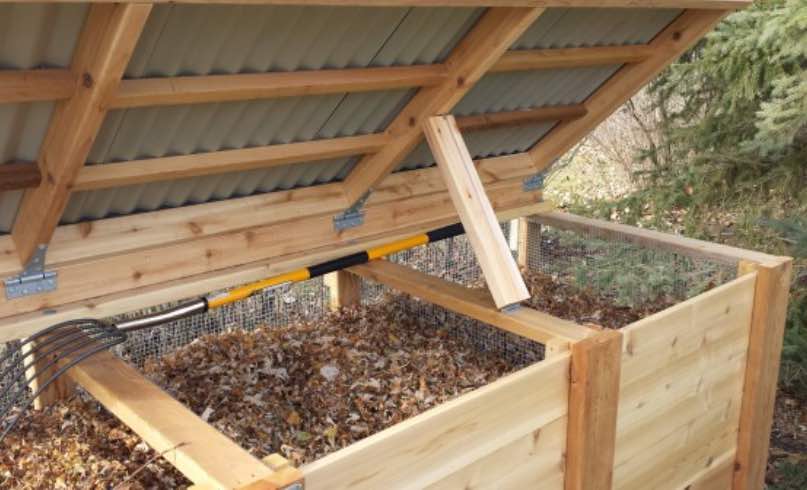The idea of composting is a great way to reduce your carbon footprint and go green, but unless you know the difference between biodegradable and compostable, you might not be doing all that you can. Yes, they are two entirely different things! So, what sets them apart really?
What’s the difference between biodegradable and compostable?
Compostable means the material disintegrates into non-toxic, natural elements in a compost setting. Biodegradable describes a material that micro-organisms can decompose like bacteria or fungi. Both have no ecological harm.

The major difference is biodegradable materials take an undetermined time to break down, which can be months, years, or even centuries. Compostable materials decompose into natural, nutrient-rich products at a much faster rate.
As the reality of the world’s waste problem becomes more clear, businesses have tried to provide consumers with simple solutions through products labeled as “environment-friendly”. However, many of these labels can be confusing and misleading to consumers.
I’ve been there and done that. But don’t worry! Let me help you.
what does biodegradable mean?
Biodegradable refers to material that breaks down into organic elements, carbon dioxide, and water vapor by organisms like bacteria and fungi through a process called biodegradation.
Almost everything you see, touch, smell, or taste can biodegrade back into the environment. BUT it will take hundreds of thousands of years for most things to do that.
An example is a biodegradable grocery bag, which is usually plastic made from corn. While it will eventually break down, there is still microplastic waste left behind for a very long time.
For a product to be labeled as biodegradable, it must quickly decompose into natural materials. Third-party certifiers, such as Control Union and BPI, typically restrict the acceptable breakdown times to between three and six months.
Good to know? Yes, but here’s the catch: most biodegradables get sent to the landfill, so they can only be helpful to the environment if disposed of properly.
Furthermore, biodegradable products in landfills often get buried. Underneath, they don’t break down and instead produce methane, a greenhouse gas bad for the environment.
what does compostable mean?
Compostable products and packaging break down into carbon dioxide, water, and biomass at the same rate as natural materials. When properly collected and processed, we can use these materials for fertilizers that improve soil quality.
Unlike biodegradables, a compostable grocery bag will turn into organic matter or humus. No plastics or chemicals are left behind.
Compostable products have major advantages over biodegradable ones:
They break down at a much faster rate, with many compostable products disintegrating at roughly around 90 days, which is the requirement for BPI certification.They decompose into nutrient-rich products, which generate healthy soil for the planet.
In simple words, everything that is compostable is also biodegradable. But biodegradable does not always mean compostable.
What happens during decomposition?
To fully understand the whole compostable vs biodegradable discussion, let us look at the decomposition process.
The micro-organisms involved in decomposition are:
Bacteria: microscopic, single-celled organisms that exist in large groups and neither plant nor animals;Actinobacteria: a bacterial species often found in soil and water which changes shapes to adapt to the environment;Fungi: spore-producing organisms that eat organic matterProtozoa: a group of single-celled organisms, either free-living or parasitic, that feed on organic matterRotifers: a minute multicellular aquatic animal that eats dead material, algae, and other microscopic living organisms
To decompose, these organisms require 4 ingredients: carbon, nitrogen, oxygen, and water. There are 2 types of microorganism degradation. Both produce carbon dioxide and water.
Aerobic digestion: degradation of materials by microorganisms when oxygen is present; doesn’t produce methaneAnaerobic digestion: degradation of materials without the help of oxygen; produces methane
As mentioned earlier, in landfills, waste like biodegradable products often gets buried along with other kinds of trash. Due to a lack of oxygen, beneficial bacteria cannot survive underneath all the trash.
What happens? The biodegradable products break down through anaerobic digestion, producing methane. High levels of methane can reduce the amount of oxygen in the air. Its presence in our atmosphere also affects the earth’s temperature and climate system.
There are landfills that collect the methane produced in the facilities and use it to create electricity. Sadly, most do not have this capability.
FAQ
1. How should I dispose of biodegradable products?
You can use commercial compost services, but these are usually hard to find and they may not always accept all types of products. The landfill is your best bet, but we don’t want to wishcycle. I would say we should aim to choose reusable items as much as possible. Hey, some coffee shops offer discounts if you bring your own cup!
2. How should I dispose of compostable products?
The best way to dispose of compostable plastics is to throw them away in a compost heap. In other areas, there are industrial or commercial composting facilities where compostable products will break down with the right mixture of heat, microbes, and time.
However, if a composting facility isn’t available in your area, you can create a compost heap at home. This will be beneficial too especially if you are into gardening!
3. Are biodegradable and compostable products recyclable?
No, biodegradable and compostable products are not recyclable, and can contaminate or disrupt the recycling system if intermixed with non-compostable products.
How can we make a difference?
At present, the best solution to help the environment continues to be reducing consumption (and waste), opting for reusables when you can, and properly disposing of waste- no wishcycling here! Yes, reducing waste is key!
So next time when you’re shopping for environmentally responsible products, read the labels carefully. Try and choose reusable items first. Aim for products in home compostable packaging first, and if that’s not an option make sure you dispose of your waste properly.
The post Differentiating Biodegradable and Compostable appeared first on Going Zero Waste.








